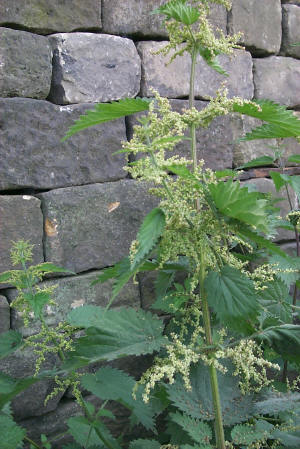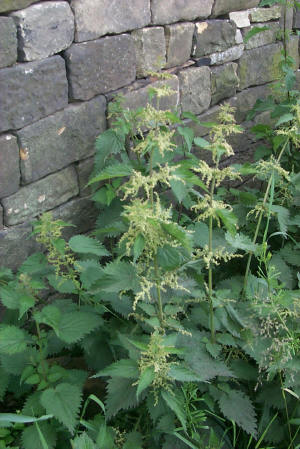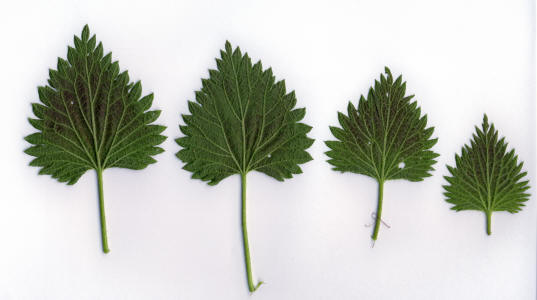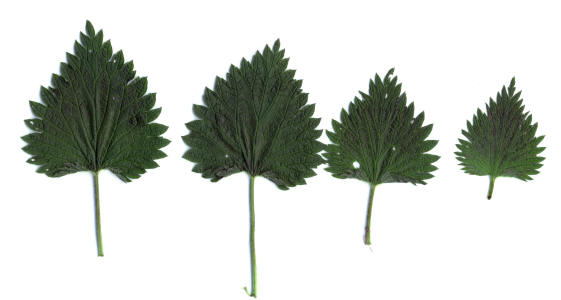| JAN | FEB | MAR | APR | MAY | JUN | JUL | AUG | SEP | OCT | NOV | DEC |




Data Table
The familiar stinging nettle. Oval leaves are toothed and pointed-tipped; borne in opposite pairs and covered with sharp hairs. Flowers appear June to October in pendulous catkins; male and female on separate plants. Favours disturbed soils. Height up to 1m
The nettle is a highly successful plant found all over the temperate areas of the world. It spreads by means of seeds and underground rhizomes that creep around just under the surface of the soil.
The jagged leaves held in pairs along the square stems are easily recognisable particularly after having experienced the sting. The plant itself is variable growing from 0.6 to 2 metres plus in height and can be found in a variety of habitats and soil types. It prefers rich soils and therefore does well around human settlements benefiting from the waste we produce - often indicating where old settlements have long since disappeared from the countryside.
How did the nettle get its name?
The latin name of the plant dioica means 'two houses' - this refers to the fact that the male and female flowers are normally carried on separate plants.It is possible that the 'nettle' is derived from Noedl meaning a needle - referring to the stinging mechanism in the nettle leaves. Others suggest that it comes from the Latin nere and other similar old European verbs meaning to sew.
What's in the sting?
The stinging structure of the nettle is very similar to the hypodermic needle although it predates that man-made invention by millions of years! Each sting is actually a hollow hair stiffened by silica with a swollen base that contains the venom. The tip of this hair is very brittle and when brushed against, no matter how lightly, it breaks off exposing a sharp point that penetrates the skin and delivers its stinging payload.It used to be thought that the main constituent of the sting was formic acid - the same chemical used by ants, giving that never forgotten burning sensation that demands to be scratched. Although formic acid is present in the sting, recent research has shown that the main chemicals are histamine, acetylcholine and 5-hydroxytryptamine (serotonin). A fourth ingredient has yet to be identified.
Remember when stung a natural remedy will often be found close at hand. The leaves of the dock contain chemicals that neutralise the sting and also cool the skin.
A real sting in the tail
The sting of our native nettle is nothing compared to some of its tropical cousins! One species in Timor causes a burning sensation and symptoms like lockjaw which can last for days or weeks.The effects of another species from Java last for months and have frequently caused the death of some of its unfortunate victims